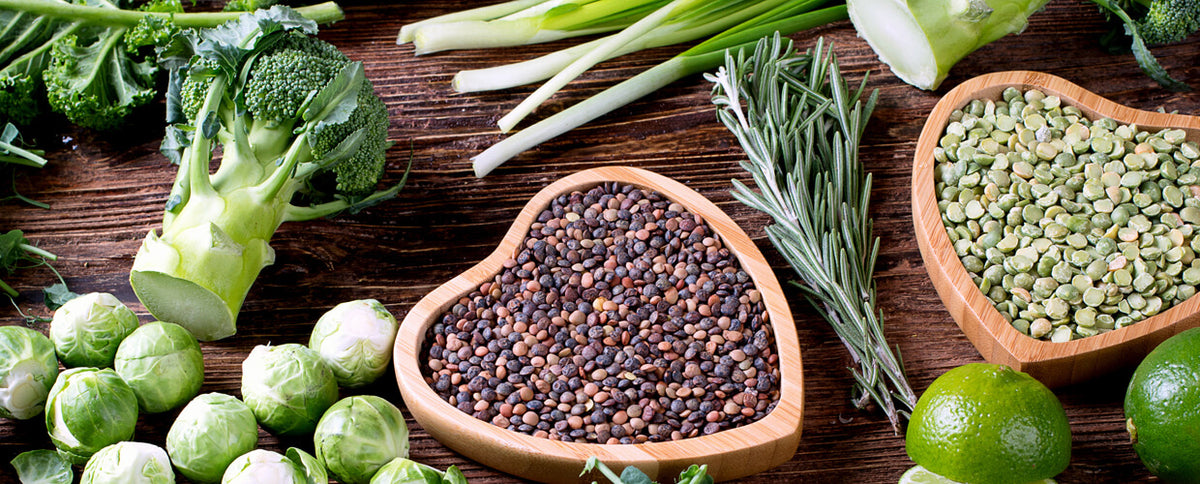6 High-Protein Plant Foods You Should Be Eating

When we think protein, we often go straight for animal-based foods like turkey, eggs, and even whey protein—and often overlook plant-based sources of the macronutrient we need to build muscle, produce hormones, and more. However, plenty of plants pack more protein than we realize. Here, we break down the high-protein vegetables to put in your cart the next time you hit the supermarket.
Getting Protein From Plants
Though no single vegetable can provide all of the protein you need daily (unless you're willing to house an entire bucket-full of it), you can easily load up by incorporating a variety of protein-rich plants.
“Vegetables are not complete sources of protein, meaning they don't contain all of the essential amino acids our body needs to make proteins,” explains Maggie Michalczyk, RDN, Chicago-based dietitian and creator of Once Upon a Pumpkin. However, "pairing them with other sources of plant-based protein will ensure you meet your protein requirements.”
6 High-Protein Vegetables + How To Eat Them
Not sure where to start? Read on for the experts' go-to plant-based foods for protein.
1. Green Peas

Considered starchy vegetables (like corn and potatoes), green peas are perhaps the most impressive high-protein vegetables in the game.
“One cup of green peas provides eight grams of protein," says New York City-based dietitian Allison Knott, MS, RDN, CSSD. (That’s about as much protein as a glass of cow’s milk.) They also pack a whopping eight grams of fiber per cup.
2. Beans and Legumes

“According to the Dietary Guidelines for Americans, beans and legumes are grouped as a protein, but are also considered to be a part of the vegetable group,” Knott says.
Right up there with peas, beans and legumes also provide impressive amounts of protein per serving. Here's how much protein half a cup of a few popular types of beans and legumes provide:
- black beans: seven grams
- pinto beans: eight grams
- lentils: nine grams
- edamame: eight grams
“Soy is an especially good source of protein because it contains a balance of the essential amino acids,” says Knott. (This means it's considered a 'complete protein.') Not feeling edamame? Try tempeh (a tofu-like product made from fermented soybean), which provides about 16 grams of protein per half a cup.
3. Kale

Though non-starchy vegetables (think leafy greens, squash, and cruciferous veggies) contain more modest amounts of protein, the few grams here and there really add up if you’re eating a plant-based meal.
One cup of kale contains three grams of protein, but since we often eat it a few cups at a time (like in giant salads), we end up chowing down on at least six-plus grams.
Another perk of kale: The curly green contains off-the-charts amounts of vitamins A, C, and K.
4. Broccoli

Broccoli, which weighs in at about 2.5 grams of protein per cup, may not be able to hold its own as a protein source, but it does make a worthy contributor to any meal that contains other sources of plant-based protein, says Knott.
Throw some broccoli and tempeh over some heat for a stir-fry, and you're in business.
5. Asparagus

While asparagus packs just a little more than two grams of protein per cup, it's also a great source of fiber and vitamin K, and helps boost the protein content of any meal, says Michalcyzk.
6. Potatoes

Looking for an excuse to eat more potatoes? Here it is.
With about three grams of protein per cup (and 7.5 grams in a whole baked potato), spuds provide both the protein and carbohydrates active bodies need—especially for post-workout recovery. Michalcyzk recommends pairing them with beans or other high-protein vegetables for a well-balanced meal.



